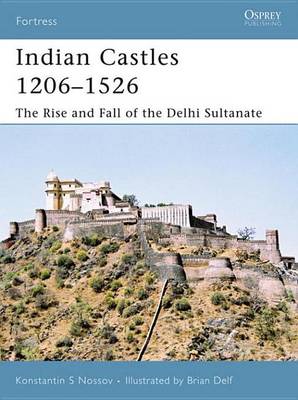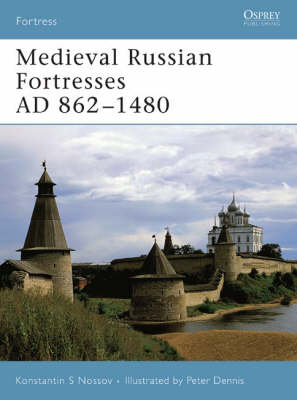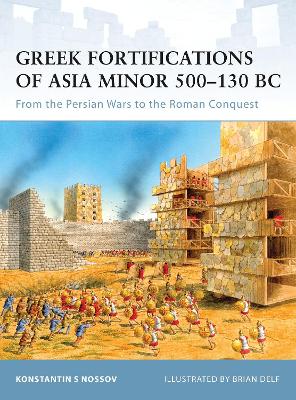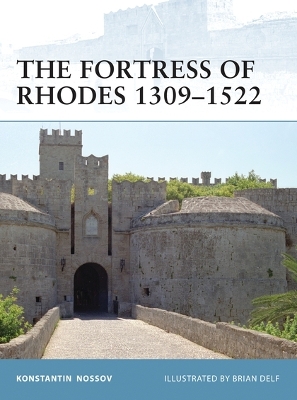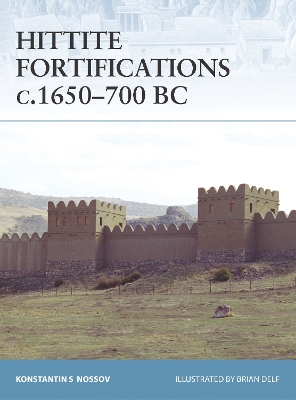Fortress
5 primary works • 6 total works
Book 39
In 1462, the throne of the principality of Moscow passed to the Great Prince Ivan III, who created the first Russian state. For the next 200 years, Russia struggled to maintain its borders against a series of assaults. This was achieved in part through the development of a network of fortified sites called kremlins and the creation of a series of defensive lines of enormous length. This book examines how these fortifications were developed to respond to ever-changing situations under the command of such charismatic rulers as Ivan the Terrible, through to the military reforms of Peter the Great. It also explores the development of the Kremlin, one of the most famous fortification types in the world.
Book 51
This era is rightly considered to be the defining age of Indian castle and fortification design. The instability and feudal division of the country throughout the greater part of the period led to the intense fortification of many of the provinces, as each small lord sought to bolster his position by constructing castles. It is also the period during which Indian castles start to show their defining features, elements of which would be modified in later years as the technology of siege warfare changed. The combined influence of the Islamic and Hindu architectural tradition lends these fortifications a unique style. This title will cover all the major sites of the period - including the fabled seven medieval cities on the site of present-day Delhi, as well as covering the prominent sieges that occurred.
Book 61
According to Russian legend, in the year AD 862, the Slav tribes of what is now European Russia invited a number of Scandinavian princes to rule over them. However, on the death of these princes, Prince Oleg seized Kiev and united the Northern and Southern Russian territories, building extensive fortifications to protect its borders. The rise of feudalism in the 11th century lead to the development of individual fortified sites and the extended border defenses fell into disrepair. Consequently, Mongol hordes poured over the border introducing the siege warfare techniques of the East, heavily influencing the fortification styles thereafter. Using a wealth of archeological evidence and first-hand sources, Konstantin Nossov charts the history of the medieval Russian fortress from its early beginnings until the 14th century, paying special attention to the development of one of the most iconic fortifications in the world: the Kremlin.
Book 90
Greek Fortifications of Asia Minor 500-130 BC
by Konstantin Nossov and Konstantin S Nossov
Published 10 November 2009
Sandwiched between the heart of ancient Greece and the lands of Persia, the Greek cities of Western Anatolia were the spark that ignited some of the most iconic conflicts of the ancient world. Fought over repeatedly in the 5th century BC, their conquest by the Persians provided a casus belli for Alexander the Great to cross the Hellespont in 334 BC and launch the battle of Granicus and the sieges of Miletus and Halicarnassus. A blend of Greek and Asian styles of military architecture, these fortified cities were revolutionary in their multi-linear construction - successive defensive walls - with loopholes and mural arches. Konstantin Nossov illustrates the evolution of Greek fortifications and the influences of the region they bordered in this fascinating study.
Book 96
First besieged in 305 BC, the island of Rhodes became part of the Roman Empire and was later fortified in the Byzantine style. Due to its strategic position in the Mediterranean, Rhodes was also attacked and besieged for over a century by Islamic forces. This title details the development of these fascinating fortifications, as well as the sieges that sought to reduce them.
Hittite Fortifications c.1650-700 BC
by Konstantin S Nossov and Konstantin Nossov
Published 7 February 2008
In the second half of the third millennium BC the Indo-European tribe known as the Hittites migrated and settled in Central Anatolia, at that time a land of small city-states whose rulers lived in fortresses. These fortifications enabled the Hittites to transform themselves into a Bronze Age super-power defeating the Egyptians at Kadesh in c.1274 BC. Konstantin Nossov examines the fortifications constructed by the Hittites in their efforts to sustain and then halt the decline of their once flourishing empire. Providing an in-depth anatomy of the fortresses, focusing on the major sites of the principal city Hattusha as well as sites at Alacah_y_k and Karatepe, with full-color reconstructions, this is an intriguing glimpse into the history of an empire which at its height rivalled the Egyptians and Assyrians. It concludes with an examination of these sites as they survive today, information that will appeal to both enthusiasts and tourists visiting the area.

